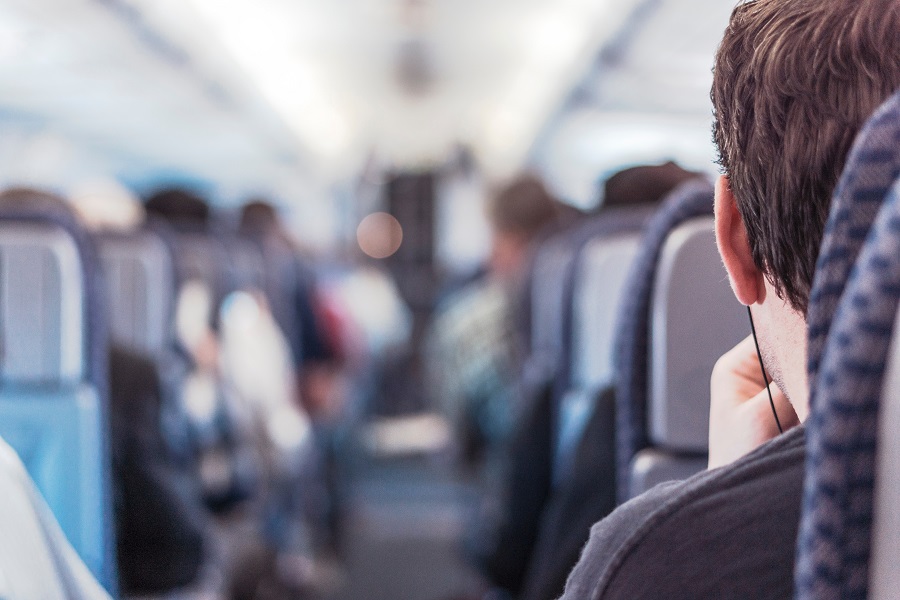Cystic fibrosis is an inherited disease related to the mucus and sweat glands, also affecting the lungs, pancreas, liver, intestines, sinuses, and sex organs.
There are various important safety considerations for cystic fibrosis that a patient and their family members should take to minimize their symptoms, as cystic fibrosis causes mucus to be thick and sticky, leading to breathing problems and breeding ground for bacteria, which can lead to lung damage and infections.
Read on to learn more about precautions you can take to protect yourself or a loved one who has been diagnosed with cystic fibrosis.
Safety considerations for cystic fibrosis at home
There are various tips you can take to make your home safer if you or a loved one has cystic fibrosis. Read on to learn more.
Disinfect your home regularly (especially common areas)
This might seem like a housekeeping basic for anyone’s home, but if you have cystic fibrosis, the types of products you use are also important, as certain common products may harm your lungs. Cleaning products such as oven cleaners, furniture and floor polish, chlorine bleach, air fresheners, aerosol sprays and detergent and dishwashing liquid may contain irritants and fragrances that can cause respiratory issues. If you’re unsure about the safety of certain products, look them up on the United States Environmental Protection Agency (EPA) Database.
Clean household belongings, too!
Don’t forget to regularly clean surfaces, wash dishes, laundry and sheets, and clean and disinfect items you regularly touch, such as your keys and phone. Mold can be especially aggravating for people with cystic fibrosis, which is why cleaning and drying home spaces is extra important.
Clean hands
It’s extra important to protect yourself from germs if you have cystic fibrosis. You easily come into contact by touching things like doorknobs or handles or handrails and then touching your face or mouth. As such, it’s key to wash your hands regularly with soap and water or clean them with an alcohol-based gel sanitizer, especially before handling food or eating or drinking, as well as after using the bathroom, touching shared items, petting or cleaning up after animals or coughing or sneezing. Encourage your friends and family members to do the same.
Use a dehumidifier
A dehumidifier works to remove moisture from the air that results from water vapor. You can purchase this appliance to use in your home to relieve cystic fibrosis symptoms and make breathing easier.
Avoid bringing external agents into the home
There are other steps you can take to minimize dirt and grime in the air and in your home, such as by:
Keeping a storage area for dirty shoes/clothing near the front door
This will not only keep your floors and carpets looking clean, but can also keep someone with cystic fibrosis from breathing in external agents throughout your home that you may have tracked in.
Change your clothes as soon as you get home
Soiled clothing can be breeding ground for bacteria and spreadable diseases that can worsen cystic fibrosis symptoms, especially if wet or damp. Changing your clothes and washing your dirty clothes as soon as possible can minimize your risk.
Cystic fibrosis safety considerations in schools
There are also cystic fibrosis safety considerations that should be taken in schools to protect children with this condition:
Safety considerations for cystic fibrosis students
If you have a child with cystic fibrosis, the first place to start is by informing their teachers and school administrators about their condition. They can help with reminding your child to take their medication, making sure they wash their hands before eating and drinking, and potentially finding a cleaner space for them to eat. You can also make their teacher aware that they may be tired at school due to a late night of coughing.
Students to wash their hands after using the bathroom
While this is something that should be emphasized to all students, your child’s teachers and school administrators can make sure this is especially encouraged to protect your child.
Wash/sanitize hands after coughing and sneezing
Similar to washing their hands after using the bathroom, teachers and school administrators can encourage good hygiene in general, such as after coughing and sneezing, to mitigate the spread of germs and disease.

Hand hygiene routine after playing outside
It’s also important to emphasize washing hands after playing outside, as dirt and other elements on your skin and clothes and in the air can aggravate cystic fibrosis symptoms and promote difficulty breathing.
Classroom layout for CF students
It’s also important that cleanliness and good hygiene be practiced in classrooms with cystic fibrosis students. If more than one student has this condition, they should be placed in separate classes to avoid cross infection.
Cystic fibrosis precautions when exercising
Exercise is an important aspect of a healthy lifestyle, even for people with cystic fibrosis. Still, there are certain cystic fibrosis precautions one should take when working out.
Check with your healthcare team
Research has shown that exercise can help with lung function in patients with cystic fibrosis. Still, talk to your doctor to confirm that your chosen activities are safe for your condition. Your doctor will also likely provide advice for avoiding germs at the gym and outdoors.
Carry ID with you
Always carry a form of identification with you while exercising in case of emergency. This can include your actual ID, as well as a medical ID detailing your condition.
Tell someone you are exercising
If you’re exercising alone, make sure someone knows where you are and how to reach you in case of emergency.
Don’t exercise if feeling unwell
As with anyone, you shouldn’t exercise if you have cystic fibrosis and aren’t feeling well, as intense activity could further aggravate your symptoms.
Know your limits when exercising
If you’re unsure about whether a certain activity is too intense or you might be pushing yourself too hard, talk to your doctor about what you’re experiencing, and understand that your condition may unfortunately prevent you from doing certain exercises.
Avoid exercising in extreme temperatures
It can be unsafe for anyone to exercise in extreme temperatures, but if you have cystic fibrosis, it can be especially harmful to work out in conditions such as extreme humidity. Use your judgment and take a day off or take your workout indoors in such instances.
Inform your instructor of your CF
If taking a fitness class, it can be helpful to inform the instructor of your condition. They can not only be aware and call for help in case of emergency, but they can also help you modify accordingly if needed.
Cystic fibrosis isolation precautions
Follow these current cystic fibrosis isolation precautions to reduce spread and prevent infection:
- Wash your hands regularly and thoroughly
- Wear gloves and gowns to minimize direct and indirect contact with soiled clothes or droplets
- Wear masks to prevent the contamination of mucous membranes through the eyes, nose and mouth

Other/general cystic fibrosis contact precautions
Below are several contact precautions for cystic fibrosis to take:
- Always wash hands before handling food, eating, and touching shared surfaces
- Change clothes immediately upon arriving home
- Maintain a clean and sanitized home
- Remove shoes upon entering your home or the home of a cystic fibrosis patient
Key takeaways: precautions for cystic fibrosis
In sum, while having cystic fibrosis can add various physical challenges to your life, there are steps you can take to increase your quality of life and reduce your chance of infection while also minimizing symptoms to help you breathe more easily.

Resources:
- https://www.cff.org/managing-cf/8-ways-guard-against-germs-everyday-life#2-wash-your-hands
- https://cystic-fibrosis.com/living/hygiene-safety-considerations
- https://medlineplus.gov/cysticfibrosis.html#cat_77
- https://cfri.org/wp-content/uploads/2018/03/CF_in_the_Classroom_12.1.15.pdf
- https://www.cff.org/managing-cf/fitness#:~:text=Research%20shows%20that%20regular%20physical,disease%20and%20improve%20your%20mood.






